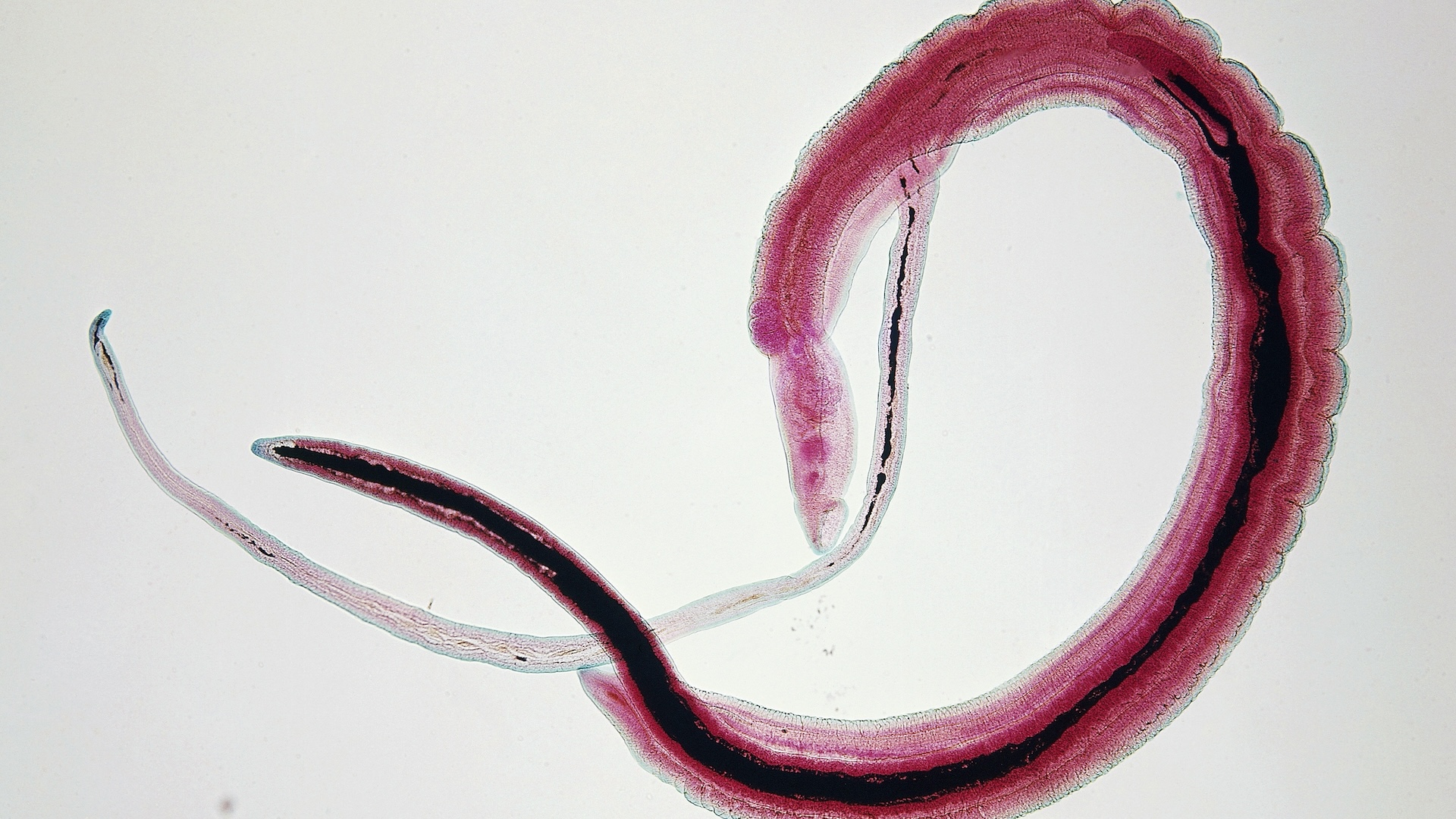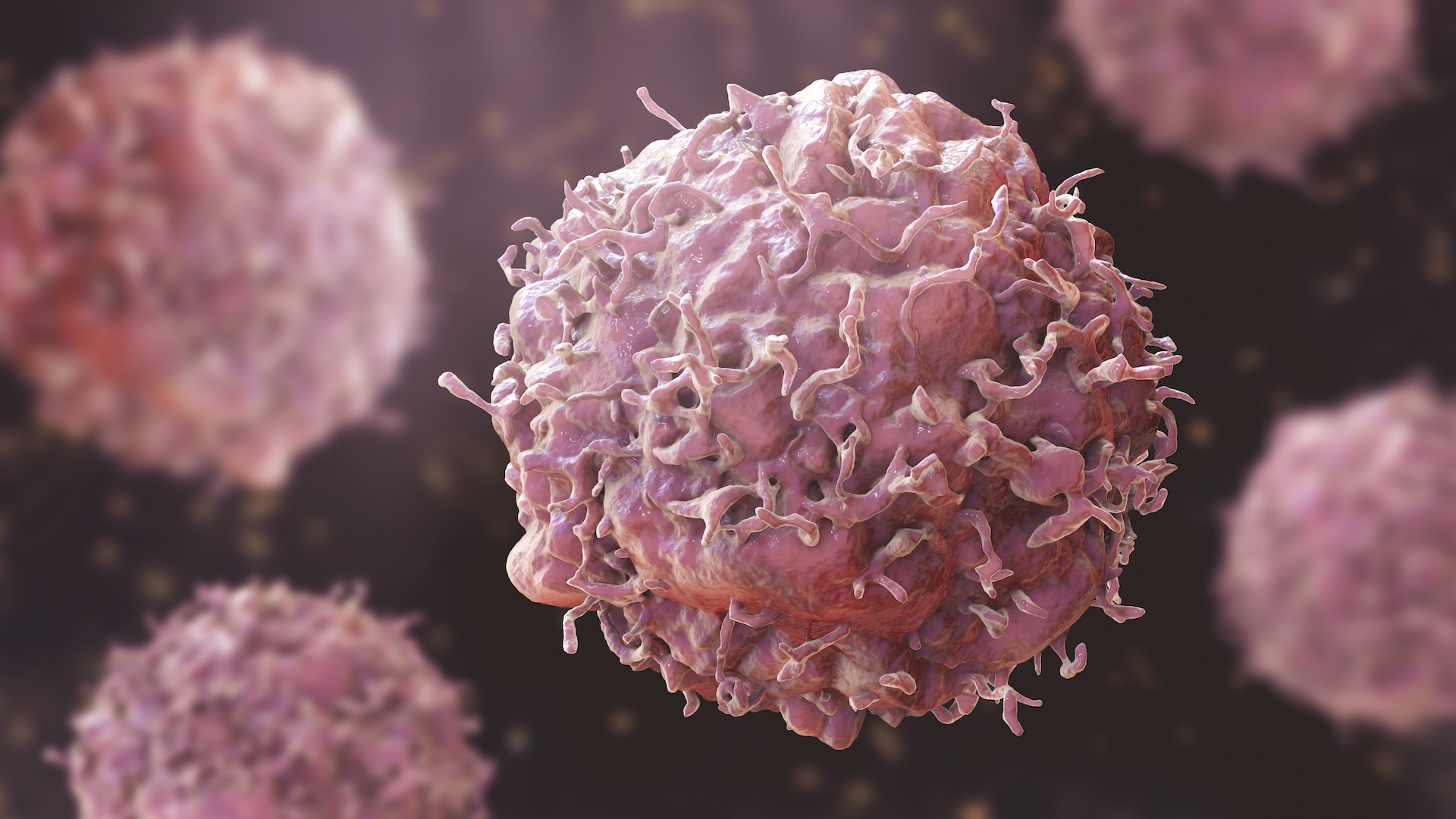Parasitic worm raises risk of cervical cancer, study finds
A parasitic worm may raise the risk of cervical cancer through several mechanisms, scientists have found, although HPV remains the primary driver behind the disease.

A parasite that infects millions across Africa may quietly prime the cervix for cancer — and, surprisingly, a standard treatment for the infection could amplify that risk, new research hints.
Schistosoma haematobium, a flatworm that lives in freshwater and can penetrate the skin, is already known to raise bladder cancer risk. Now, research presented April 12 at ESCMID Global 2025 — an annual meeting about clinical microbiology and infectious diseases — has uncovered how the worm can also trigger cancer-related gene activity in the cervix, both during an active infection and after it's been cleared.
The study included only a small group of women, so its results bear confirmation in larger trials.
"Further study is needed for us to understand if this link actually exists and to what extent it increases the risk of cervical cancer," said Dr. Joshua Cohen, the medical director of the gynecologic cancer program at City of Hope Orange County who wasn't involved in the research.
Regardless, "given parasitic infections are most common in countries with less access to clean water and sanitation, it is important to focus on reducing the rate of parasitic infections for all people living in these locations," Cohen told Live Science in an email.
Related: New self-swab HPV test is an alternative to Pap smears. Here's how it works.
An unsung factor in cervical cancer?
S. haematobium infects approximately 110 million people globally. However, previous studies conducted in African countries suggest only 1.7% to 3% of cervical cancer cases in those regions can be linked to the infection. The primary pathogen that drives cervical cancer is human papillomavirus (HPV); nearly all cervical cancer cases are linked to persistant infections with high-risk strains of the virus.
Sign up for the Live Science daily newsletter now
Get the world’s most fascinating discoveries delivered straight to your inbox.
HPV drives cancer by producing viral proteins that disrupt cervical cells' life cycle and by worming its way into the infected host's DNA. S. haematobium, however, takes a different approach, Dr. Jennifer Downs, an associate professor of medicine at Weill Cornell Medicine who worked on the new research, told Live Science in an email.
The flatworm, found in Africa and some parts of the Middle East, causes a disease called schistosomiasis, which can lead to itchy skin, fever, chills, cough and muscle ache. To investigate how the worm might affect the cervix, researchers analyzed tissue samples from 39 women in Tanzania — 20 with active infections and 19 without.
All of the infected participants received the standard treatment, a drug called praziquantel. Tissue samples were collected before this treatment and then again four to 12 months later.
The team analyzed the tissues' gene activity, pinpointing several genes that behaved differently in infected women than in uninfected women; they also identified genes that changed their activity after the antiparasitic treatment. Four of the altered genes are known to play roles in cancer, typically by driving abnormal cell growth and tumors when their activity is turned up too high.
After treatment, genes involved in inflammation and tissue repair, along with genes associated with the breakdown of the cervix's protective barriers, became more active. These changes were tied to more blood-vessel growth and less cell death, as well as to the activation of some processes seen in cancer.
Changes in the genes that help maintain the cervix's protective barrier are "especially concerning," lead study author Dr. Anna Mertelsmann, a researcher at University Hospital Zurich and Weill Cornell Medicine who specializes in infectious diseases and molecular oncology, said in a statement. "Without these, women may become more vulnerable to HPV infection and persistence."
So, these changes in the cervix could open the door to cancer-causing viral infections.
How the worm raises cervical cancer risk
In summary, when the parasite's eggs become lodged in cervical tissue, they provoke a strong inflammatory response, Mertelsmann told Live Science in an email. This inflammation produces reactive molecules that could damage DNA in cells in the surface of the cervix, she explained.
The same mechanism is believed to lead to bladder cancer, which can occur when S. haematobium eggs enter the bladder, Downs said. An estimated 40% to 70% of women and girls infected with the parasite likely have eggs lodged in the genital tract, she added.
In addition to the carcinogenic effects of the eggs, the infection triggers repeated cycles of injury and healing that can lead to abnormal tissue growth, Mertelsmann said in an email. Simultaneously, changes in the cervix's protective barrier may impair the body's ability to detect and eliminate precancerous cells before they progress to cancer, she said.
The study also found that praziquantel may carry risks for cancer, as it was associated with genetic changes linked to the disease. "At least shortly after treatment, the elimination of the S. haematobium might at least transiently increase the risk for oncogenesis," or cancer growth, Mertelsmann told Live Science.
However, while the data point to these cancer-related genetic changes, "we don't know if S. haematobium infection or the treatment causes or contributes to cervical cancer," she emphasized. Longer, larger studies are needed to unpack exactly how the genetic changes might impact cancer risk, she said.
Notably, if left untreated, S. haematobium infection can damage organs, including the lungs, intestines and spleen, so forgoing treatment would come with its own risks.
The insights from this study could have significant implications for cancer prevention in regions where schistosomiasis is endemic.
"Women diagnosed with S. haematobium should be closely monitored for early signs of cervical tissue abnormalities," Mertelsmann said in the statement. Additional therapies, such as anti-inflammatory or immune-modulating drugs, may also help to counteract the harmful effects seen after treatment, she suggested. "Moreover, widespread HPV vaccination could play a crucial role in reducing cervical cancer risk for women affected by schistosomiasis," she added.
Now, the researchers are following a larger group of 180 women over a year to confirm these early results. Future studies will explore whether women with a history of schistosomiasis are more likely to develop cervical cancer due to long-term HPV infections.
Disclaimer
This article is for informational purposes only and is not meant to offer medical advice.

Clarissa Brincat is a freelance writer specializing in health and medical research. After completing an MSc in chemistry, she realized she would rather write about science than do it. She learned how to edit scientific papers in a stint as a chemistry copyeditor, before moving on to a medical writer role at a healthcare company. Writing for doctors and experts has its rewards, but Clarissa wanted to communicate with a wider audience, which naturally led her to freelance health and science writing. Her work has also appeared in Medscape, HealthCentral and Medical News Today.
You must confirm your public display name before commenting
Please logout and then login again, you will then be prompted to enter your display name.









